Currently, China is still one of the best places to purchase packaging machinery, with billions of dollars in machinery exports alone, China is a good choice. The glut of Chinese machinery manufacturers and suppliers is immeasurable. However, people still face challenges and distorted views about the import process. This article will help you understand the relevant information to start the process. It will detail how to find reliable suppliers before customs clearance. It will give you an understanding of the best ways to communicate and common trade terms. In addition, this article compiles the compliance documents required for machinery importation.
By the end of this article, you will have all the knowledge to start importing machinery from China. Importing packaging machinery from China does not require any experience. To navigate all the logistics of this process like a seasoned importer, read on.
1. How to identify a good packaging machine supplier
The first step in the process is to identify a suitable machine supplier. This step is critical for shorter lead times, a better experience, and a trusted supplier. With so much variety, choosing the perfect supplier can be overwhelming. However, this can be determined by following a few simple steps provided in this article. There are many ways to get the best suppliers. This can be through physical means or the Internet

1) On-site purchase
The offline route to identifying suppliers is often at events such as trade fairs and exhibitions. Trade shows have appeared in some countries, showcasing Chinese manufacturers and their products. These events allow you to communicate with the manufacturer’s agent. They give you a better understanding of machinery imported from China. The most popular trade fairs are the famous Canton Fair and Yiwu Commodity Fair. A major focus of the Hong Kong International Printing and Packaging Exhibition is the packaging.
2) Online resources
Finding packaging machinery suppliers online in China is easy. A simple Google search can provide a plethora of options to choose from. Similarly, you can also find suppliers through search engines such as Yahoo! Search, Bing, etc. The trade fair also makes use of the web platform. This duality offers consumers the best of both worlds, an online platform, and a trade show.
3) Areas to Find Suppliers
To narrow down your search to find a good supplier or manufacturer, find an area where you can search. China’s industrial clusters have proven to provide reliable machinery suppliers. These provinces have their own specialties in the industries in which they operate. For Example, Zhejiang, Guangdong, Shandong, and Jiangsu. Especially in Guangdong, thousands of machines are exported every week.

4) Company view
To get a better understanding of a supplier, start by looking at a photo of the company. Then, read the reviews that customers leave in the supplier’s feedback section. Then ask about company policy. This is the after-sales service of the machine. Pictures and comments are welcome information. The problem is, that they don’t paint a larger picture of the company’s context. That’s where the demand for the company’s history comes in.
5) Company Background and History
The supplier’s company history is critical. The longer a supplier operates, the more reliable it becomes. This includes having machines that meet all necessary regulations. The company’s business license is the first route to inspection. The company license describes the date of establishment of the company and describes the experience of the company. Obtaining this information directly from the supplier is also a welcome option. This process identifies reliable suppliers from those with potentially defective and out-of-spec machines.
6) Suppliers with experience exporting to your country.
Finding a company that exports to your country can help you with the importing process. It makes the process easier. With this experience, suppliers are often very familiar with various compliance certifications. Include your country. Sometimes suppliers export to your country and it can be useful to reap useful advice. This advice is usually taken as a recommended freight forwarder for easier customs clearance.

7) After-sales service of packaging machinery in China
It is recommended to consult the supplier’s after-sales policy. Determine the necessary maintenance to perform on the machine. Include the frequency of these jobs you will undertake. This maintenance may often take the form of expert training. This is for you and the staff of your packing machine. Experts are usually provided by the supplier company to ensure the correct use of the machine.
After-sales service also includes but is not limited to:
- Mechanical transport assistance
- Packaging Design Assistance
- Commissioning of Chinese packaging machinery.
2. Find the right machine to import
Identify the material or product you want to package. For example, packing solid food and liquid food by machine makes a difference. This will narrow the search for machines and meet your desired machine preferences. The materials used to package these products will also vary.
1) Material package
From packaging films to capping machines, machinery requires accessories. The materials required to package potato chips are different from those used for skin care products. The key is to know what product you want to package. Don’t ignore the materials that go with the packaging machinery.

2) Types of packaging machinery
The next step is to understand the different types of machines. Packaging machinery comes in several forms. That’s why there are so many choices. Therefore, for the best machine options, an extensive list of requirements is required.
There are a large number of packaging machinery, including:
- Vertical packaging machine
- Horizontal packaging machine
- Pre-made bag packing machine
- sealing machine machine
- Coffee/tea bag packers and many others…
3) Packaging Requirements
Determining approximate packaging requirements shortens the communication process and lead time. Presenting these predefined requirements to the supplier shows that you are serious. Therefore, they are most likely to receive offers from suppliers more quickly.
Approximate requirements and specifications include:
- Voltage and Weight
- Protection class and the required production time of the machine. – Safety compliance, functional compliance certificates, and efficiency.
- After-sales service requires operation and maintenance guidance and a mechanical warranty.
4) Safety standards and machine functions of the importing country
Importing from China, safety precautions are essential. To take back your machine to the importing country, safety standards must be followed. The required brief documentation is detailed further below in this article. As mentioned before, it is critical to follow safety guidelines for handling entities such as voltage. Communicate mechanical voltage capacity with your supplier. Failure to comply will result in your machine not going through customs.
The standard voltage in China is 220V 50-60hz. Many manufactured machines are designed to this voltage standard. Importing countries may have different voltage standards and requirements. It is very important to check the power requirements of the machine with the manufacturer because if the machine does not meet your country’s power standards, a custom machine will be required.

5) Mechanical test
To further comply with local safety standards, mechanical testing is performed. Testing ensures that the machine does not experience technical failures during long-term operation. There is also the option of importing already tested machines. The certificate issued is a direct representation of the test machine. Certified machines comply with safety regulations within national jurisdiction. A tested machine can also reduce the overall cost of the import process. If you find the perfect machine, it can be certified by a third party. However, this is an expensive process.
Testing is essential. This is because it is possible to import defective machines into your country. Returns on machines usually do not result in a refund. Machines that have cleared customs in China may even refuse to export once they are returned. Disputes with suppliers are often detrimental to customers. Lost experiences are often non-refundable losses, and you want to avoid that.
You need to know exactly what kind of packaging machine you need. A friend of mine is in the used cell phone wholesale, which is a very niche market. As a one-stop mobile phone solution provider, it has achieved great success. provides used cell phone wholesale, cell phone accessories wholesale, cell phone repair service as well as cell phone recycling service for Apple and Samsung since 2012
3. How to communicate with Chinese suppliers
Language barriers between suppliers and customers are often a concern for customers. This obstacle is not a hindrance. This is because most of the overseas sales of Chinese manufacturers and suppliers are English-speaking. The person is proficient in English so communication is simple. There are several ways to communicate with Chinese suppliers. Most of these platforms are online.

1) Whatsapp
The most common method of communication is through the Whatsapp application. Accessing apps through Android, IOS and various Windows devices can be easier. It also provides a web platform.
2) Skype and Zoom
Also, apps like Skype and Zoom are solid alternatives. These platforms, like Whatsapp and Mailbox, rely on an internet connection to communicate.
3) Telephone
Calling is a more expensive option. But it’s the fastest way to contact Chinese manufacturers.
4) E-Mail
Finally, a mailbox in the form of email is a trusted form of communication. Note that time to reply to emails is often the slowest way to communicate. This can be frustrating if the information being shared is time sensitive to the process.
5) e-commerce site
Some vendors are also based on the messaging section built into e-commerce sites. From personal experience, delegated communication agents respond quickly. The agents are also very knowledgeable and offer different quotes and machine qualities.
4. International Trade Terms
International trade is the current ratio of export prices to import prices. These shipping terms are also known as INCOTERMS. These determine how much the supplier will offer you after discussing the terms of trade. When choosing an incoterm, be aware that the most expensive step is domestic shipping. And the shipping process for imports from China. At this point, it is wise to negotiate from an informed perspective. This will get the best price for your machine. Below are 5 of the most common Incoterms.

1) EXW (EX -work)
When you use this quote on a product price, it quotes the original product price. Disturbingly, these terms of trade are where most of the processing is done by the customer. This price is easy to compare among the various manufacturers you care about. This requires you to find a freight forwarder to go to the supplier’s warehouse to pick up the machine. Another option is to use a courier service to receive the product. This option will allow offers on ECW terms. This is because, in China, courier services can pick up packages. Then from the supplier’s workhouse, delivered to you faster than other shipping methods. The burden of liability and shipping responsibility falls on the customer. This is when the machine is ready to be shipped.
2) CIF (cost plus shipping)
Cost, insurance, and shipping are other common ways of quoting products. The price includes the cost of the goods, shipping, and insurance to a country. It is important to note that this insurance is partial as far as the insurance factor is concerned. It only covers the case of lost goods. This insurance does not cover damage to the goods. It also does not include damaged packaging of the goods. Any damage in transit is not included. Quotes in CIF terms can serve as import blueprints without freight forwarders. It allows you to find local companies and customs brokers. The goods are then shipped and you are notified of any further logistics in the process.
3) FOB
The supplier will give you a quotation based on the shipment of the goods to the sea vessel. in a seaport of your choice. The same goes for the plane that delivers the cargo to the airport of your choice. If you don’t know a marine port or airport, your supplier can help. Ask the supplier for the nearest port location and ask the supplier to quote you. In this case, having a freight forwarder is beneficial. Forwarding is the bridge between you and your suppliers.
The freight forwarder then delivers the goods to the final destination. Freight forwarder for customs clearance. This includes documentation, cargo tracking, stewardship, etc. This makes the process as seamless as possible for the client. FOB quotes are especially helpful for both novice and experienced importers. Agents provide a hassle-free shipping logistics experience. Delivery is the easiest part, at a convenient pickup location of your choice.

4) DDU, DDP
DDU or DDP is the easiest method used by international customers. This is especially true in the US and Canada. DDP stands for Shipping Paid and DDP for Unpaid Shipping.
- DDP
DDP is the most convenient way to receive a machine in a shorter period of time. This clause stipulates that the supplier handles all the import process. This includes tariffs. The supplier bears the responsibility to ensure the smooth transportation of the goods. The entire process includes quotation fees. Therefore, receiving your machine from China is simple, easy and fast. The import process that most customers worry about is interspersed within the terms of trade. So, as an individual, not having documentation can make you feel overwhelmed. All import duty charges are paid within one quotation. Some suppliers require you to pay duties before shipping. It is then defined as “Unpaid Delivery Tax”
- DDU
In 2010, Incoterms announced the abolition of DDU Incoterms. But in China, manufacturers and suppliers continue to use the word as an option for customers. For most western countries, Chinese suppliers have freight forwarders. These agents can assist with the import process. All customs and tax logistics are handled, but only in certain countries. Taking DDU or DDP as an optional trade term may not be that simple. This is because it relies on the supplier’s network of freight forwarders. Rather than an experienced forwarder in your specific importing country. Certification and Documentation Requirements for Imported Packaging Machinery in China The requirements for Chinese machinery import documents vary from country to country.
Certificates, safety standards, and compliance regulations are a wide range of regulations. All are necessary units to legally import Chinese machinery and equipment. The purpose of compliance is to ensure the testing of various machinery and products. In order to meet the standard mechanical quality and safety requirements of various countries. Failure to comply with prescribed domestic regulations can lead to several problems. Including paying expensive fines and taking back the machine.
The consequence is that customs authorities choose to keep these shipments. This is pending approval of all necessary regulations. The legal implications of import regulations further enhance the technicality of the process. With the right information on responsibilities and safety parameters, you can avoid any missteps. Below is a description of the documentation for all machinery that needs to be imported from China.
5. General Documentation Requirements
The bill of lading was one of the earliest general requirements. This is a contract between your supplier and the shipping company. Bills of exchange facilitate the transportation of goods. It lists all cargo and journeys up to the machine’s final destination. Under this Act, there are a few other documents that buyers should be aware of. Once the machinery imported from China reaches the status of the importing country;
- -Certificate of origin to certify that the machine is sold from China.
- Commercial invoices are used for customs clearance procedures.
- Packing list to detail the contents of the goods
- EORI number (the UK only) This serves as an importer’s verification to assist in tracking imported goods.
- Bill of Lading

1) the U.S.
The United States is one of China’s major trading partners. The United States dominates China’s machinery imports. China spends trillions of dollars on imports. Therefore, there is a lot of information on regulatory requirements. Here’s how to import packaging machinery from China to the US. Regarding labeling requirements, packaging machinery requires a “Made in China” label. This complies with ISO regulations on importing machinery from China. Mandatory regulations cannot escape compliance rules unless communicated and requested otherwise.
2) UK and EU
UK regulations include all general requirements and CE certificates. Before ordering the machine, make sure it complies with the CE directive. The specific provisions of this decree vary from machine to machine. Attempting to import substandard machinery is illegal and can have unfortunate consequences. This certificate ensures that any imported product into the EU or UK meets safety requirements. Instructions, within the scope of machine instructions, specify a general rule. It said all machines operating in the EU will be tested for safety regulations. All must follow the instructions. The machine must have CE marking and a mandatory user manual.
In addition, there are some electronic regulations that machines need to comply with. For electronics, a general rule of thumb is whether they support socket input. If the answer is yes, then this machine is under the supervision of the EU RoHS directive. The full name of RoHS is “Restriction of Hazardous Substances Directive”. Mechanical and CE documentation requirements in this range require:
- label file
- Declaration of Conformity and User Manual.

3) Australia
The ERAC equipment certification system manages machinery imported from China in Australia. Unlike the EU, Australia does not have a set of standard requirements for imports. The Electricity Regulatory Authority Committee has drafted a compliance regime. This solves the safety issue for motors in Australia and New Zealand.
A certificate of origin and a packaging declaration are required for customs declaration.
Note that hiring a customs broker or freight forwarder can simplify customs procedures. All documentation can be tedious. With these middlemen, customs clearance is faster and less hassle. The timeline from cargo arrival and delivery to a convenient location for your representative is much faster. The imposition of duties on imported goods is a means of generating revenue. This is also to protect a country’s manufacturers/suppliers from foreign competition. The basis for this monetary rule is the value of imported goods, Incoterms and commodity codes. The HS code appears on your commercial invoice.
Counting these different countries seems complicated. If you take responsibility, things get complicated. This means that you are responsible for most of the import process, duties and taxes. This article will explain an easy way to calculate tariffs on any machine imported from China. To check the tariff percentage, visit the company website of your importing country. Type in the HS code: 8422. After this, the duty is calculated by adding the total value, shipping, insurance, and other charges.
- USA: https://hts.usitc.gov/?query=8422.30.9185
- UK:https://www.trade-tariff.service.gov.uk/headings/8422
- Australia: https://www.dfat.gov.au/trade/agreements/in-force/kafta/official-documents/Pages/schedule-of-tariff-commitments-australia

6. What to pay attention to when you receive the machine
Make sure the packaging of the machine is well sealed. This requires careful inspection of the goods upon arrival to ensure that the goods are not damaged. This indicates that there has been very little or no tampering with the machine. So a delivery with the same functionality is a reasonable expectation. Check these details before signing the receipt.
7. Conclusion
The process of importing packaging machines from China is very feasible. This guide details various aspects of the import process. This ensures that any customer can import machinery from China like a professional. From regional to centralized procurement, from suppliers to communication channels. Tips on determining the best mechanism for specific preferences and compliance regulations. Import duties and more, it is a complete proof, step-by-step guide on how to import packaging machinery from China.

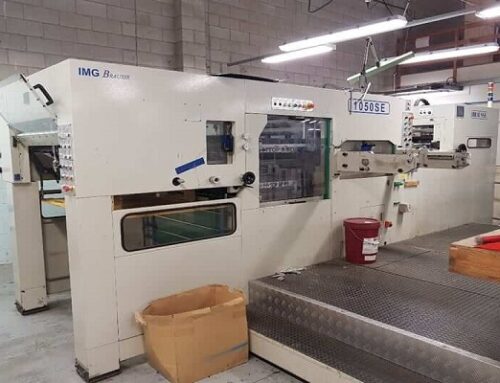
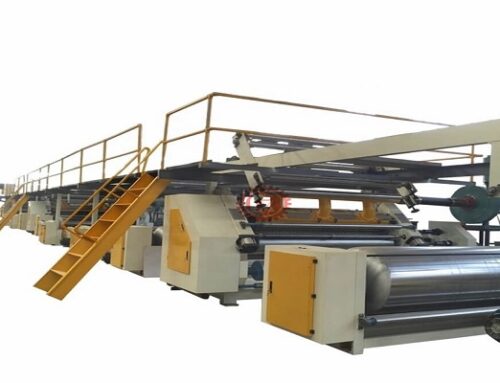
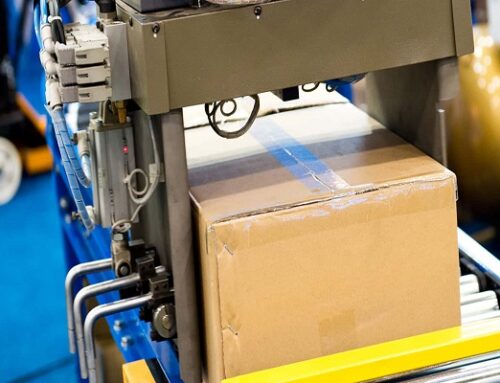
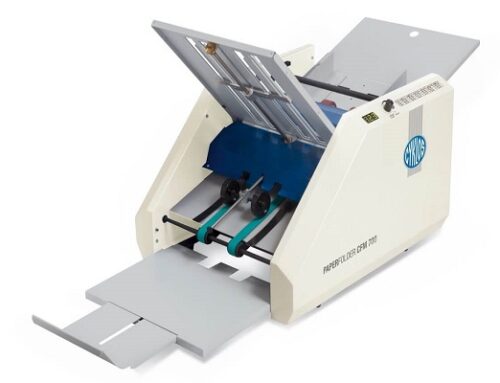
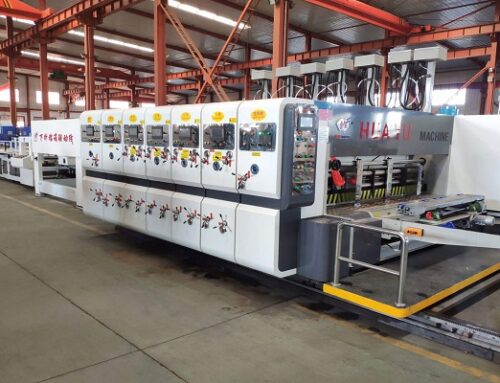
Really good article, it helps a lot. We need help our clients importing drop testing machine, but meed some problems, this article help me solve it.
Thanks…It’s a lovely note. This is more helpful to understand more about a Import machines from China. I love the information I have gathered here, thanks so much, and keep up the good work. It has helped me.